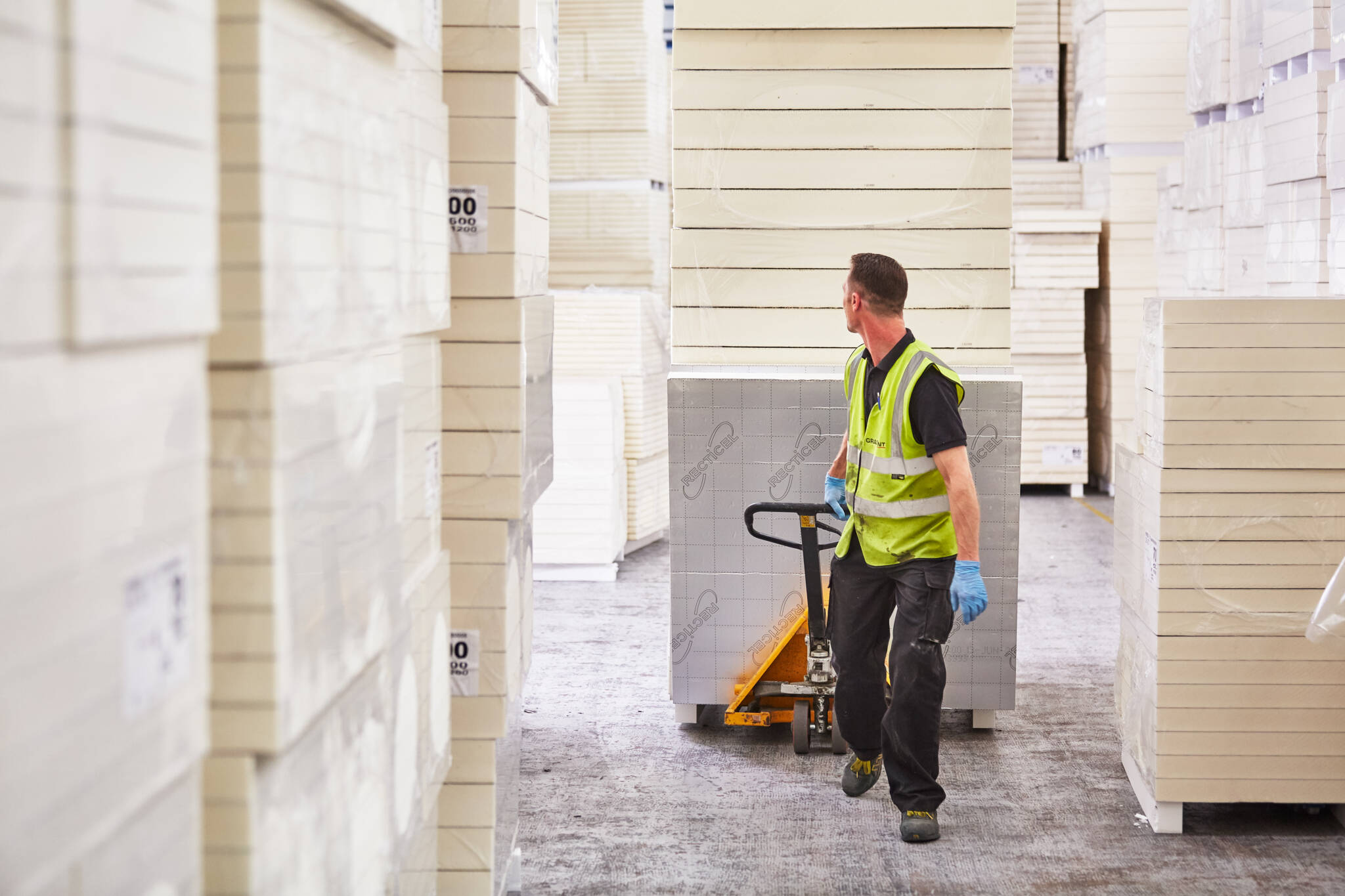WHY SINGLE-LAYER TAPERED INSULATION IS A GOOD INVESTMENT

As winter approaches, maintaining interior comfort whether in a domestic or business environment gains greater significance. Ensuring a building’s fabric, particularly the roof, is properly insulated is essential to maintaining regulation thermal performance and preventing potentially damaging leaks during the wetter, colder months.
The Energy Saving Trust estimates that a poorly insulated roof accounts for a quarter of domestic heat loss. As a consequence, fuel bills increase and the environment is impacted by higher CO2 emissions. Tapered insulation schemes offer the ultimate warm-dry roof protection. But when it comes to specification, which system represents the best all-round option: a single or multi-layer scheme?
The ultimate consideration when choosing a roofing system is the level of protection it offers in respect of keeping a building warm and dry. Single and multi-layer tapered insulation systems are designed-to-falls, thus adept at preventing issues with ponding and enhancing the life of the accompanying waterproofing. But how do they compare in terms of cost?
With multi-layer systems, build-ups of various thickness are required to achieve appropriate falls. This adds layers of complexity to the design and installation process. By way of comparison, Gradient carried out a like-for-like assessment to see how single-layer and multi-layer systems measured-up in respect of installation times. The single-layer application time was 56% quicker than the multi-layer solution1.
Reduced installation times increase cost efficiencies. Multi-layer systems are more labour and time intensive due to each board within an application needing to be individually bonded to a roof. This process also presents greater opportunity for errors during installation on account of the multiple layer aspect of the insulation being carried out in a ‘live’ building environment.
Curing times provide additional time stresses for multi-layer applications. This is due to one-part PU adhesives taking longer to set in winter.
Simple and Effective Single-Layer Process
Bonded under factory-controlled conditions, single-layer insulation systems are ready to install once delivered to site. The insulation within the build-up will have been monitored for its depth and minimum pull-off performance, leaving installers with the relatively straightforward task of bonding it or mechanically fixing it to the deck – in one block – to the roof, followed by the waterproofing. This not only guarantees the insulation will perform as-designed, it significantly reduces application time and costs, as well as minimises the prospect of additional cutting and waste.
Therefore, whilst a multi-layer solution might appear, on paper at least, to be a more cost-effective option, in the long-term it is no match for a well-designed single-layer option.
Ask the Experts
From a specification point of view, quality is built-in with single-layer insulation systems. At Gradient, for example, our technical teams will carry-out a pre-design survey of a roof to determine the precise position of falls and other outlets. Once agreed, the specification will be signed off by the contractor and client, and our teams will get to work on producing the system itself. Detailed drawings accompany the completed single-layer system to site to further simplify the installation process. This involves a singular bond between the insulation and the vapour control layer.
In summary, single-layer systems are a preferred tapered insulation option, as they:
- Offer best performance
- Save time
- Provide cost efficiency
- Produce less waste
Single-layer tapered insulation is not only tailormade for a specific application, it’s bespoke to a customer’s budget. It ensures upfront costs are more than compensated by the system’s long-term thermal performance in helping to supress fuel bills and limiting the need for future maintenance. When it comes to specifying an all-round roofing solution, single-layer tapered insulation is a price worth paying.
1 (1067) Single-Layer vs Multi-Layer Tapered Insulation Systems – YouTube







